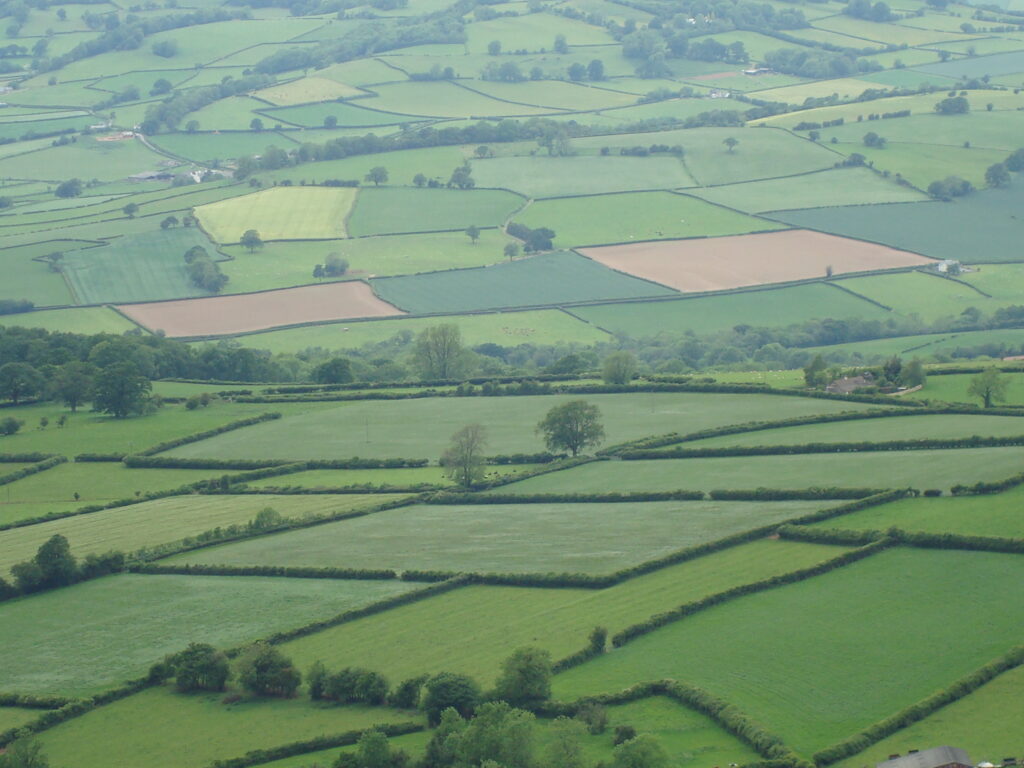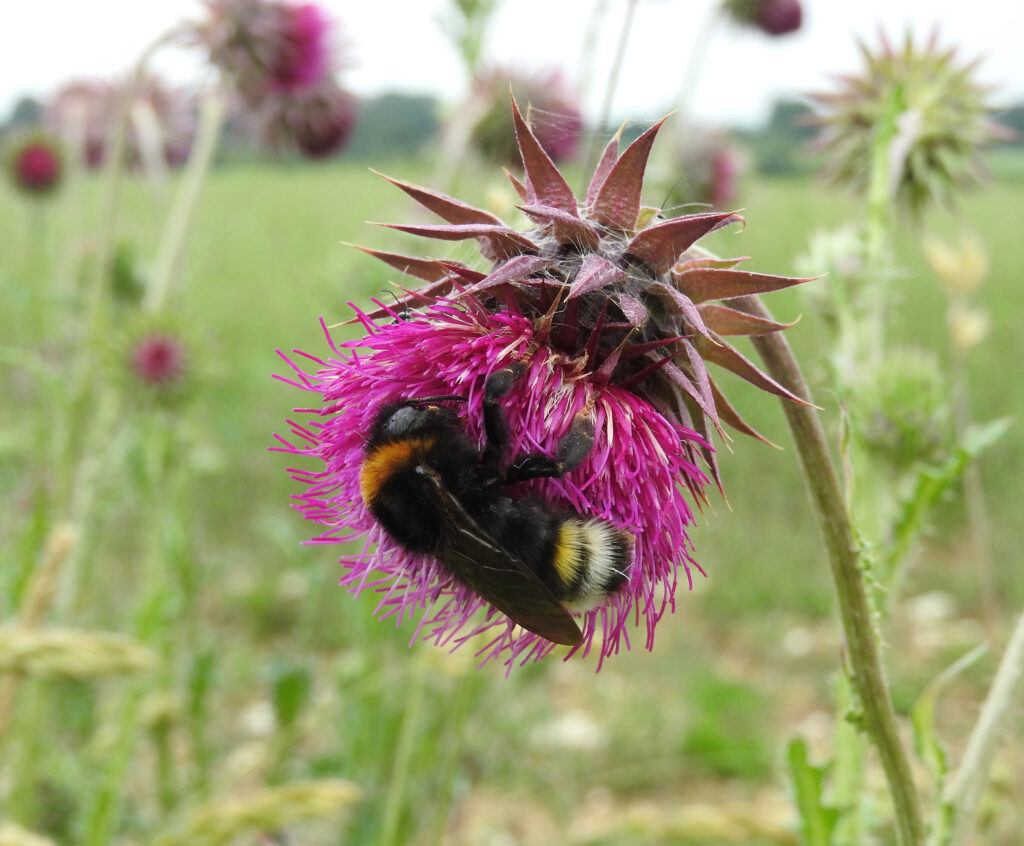
HOW MID-TIER CAN HELP YOUR FARMING BE TOP TIER FOR WILDLIFE
Home / News / How-mid-tier-can-help-your-farming-be-top-tier-for-wildlife /
Fair to Nature Conservation Advisor, Kevin Rylands, looks at how Countryside Stewardship options can fit well with Fair to Nature habitat requirements.
In England, the application window for 2024 Countryside Stewardship (CS) Mid-Tier and Wildlife Offer agreements, opened on 21 March and remains open until 18 Aug 2023.
Each agreement offers farms a five-year grant for management, providing a guaranteed financial return for delivering benefits for biodiversity and the ‘public good’, such as soil, pollution, and flood management.
For wildlife to thrive a minimum of 10% of the farmed area needs to provide the six key FarmWildlife actions, and therefore be Fair to Nature. These areas can be funded through Mid-tier, and carefully deciding what options, and where to site them, will allow you to maximise the biodiversity and financial benefits.

In addition to boosting wildlife, entering Mid-tier can help make financial savings, siting options on unproductive or low yielding areas, improving soil condition and water quality, and boosting populations of beneficial invertebrates can all make a difference to the bottom line. An application can contribute to an integrated pest management approach, enhancing wildlife whilst reducing the use and cost of inorganic fertilisers and pesticides whilst still achieving your yields. Fair to Nature farms manage and maintain their areas of priority habitat in good ecological condition, supported by Mid-tier options such as Management of species-rich grassland (GS6) or Ditches of high environmental value (WT3). These are often used alongside the Wild Pollinator and Farm Wildlife Package (WPFWP) to deliver the various Fair to Nature habitats as well boosting the score/value of applications for this competitive scheme. Agreements are awarded to those planning to make the biggest environmental improvements in their local area and demonstrate the best value for money.

Wild Pollinator and Farm Wildlife Package
There are three packages for arable, mixed and pastoral farms, these can all be combined with other options to complete your Mid-tier application.
Arable
To be fair to pollinators and other beneficial invertebrates, at least 4% of the farmed area should be providing flower-rich habitats. Suitable options are:
Nectar Flower mix (AB1) £614/ha
Flower-rich margins and plots (AB8) £673/ha
Cultivated areas for arable plants (AB11) £550/ha
Two-year sown legume fallow (AB15) £593/ha
Autumn sown bumblebird mix (AB16) £637/ha
To be fair to farmland birds at least 2% of the farmed area should be providing seed-rich habitats. Suitable options are:
Winter bird food (AB9) £732/ha
Enhanced overwinter stubble (AB6) £522/ha
Unharvested cereal headland (AB10)
Autumn sown bumblebird mix (AB16) £637/ha
Basic overwinter stubble (AB2)
To be fair to farm wildlife at least 1% of the farmed area should be wildlife rich boundaries and margins. Suitable options are:
Management of hedgerows (BE3) £10/100m (a side)
4m to 6m buffer strip on cultivated land (SW1) £451/ha
12m to 24m watercourse or nitrogen sensitive terrestrial habitat buffer strip on cultivated land (SW4) £612/ha
Buffering in-field ponds and ditches on arable land (WT2) £594/ha
Fair to Nature growers also manage an additional 3% of their farmed area. This consists of any of the above options as well as others such as:Beetle banks (AB3) £667/ha
Nesting plots for lapwing (AB5) £587/ha
In-field grass strips (SW3) £658/ha
Mixed
To be fair to pollinators and other beneficial invertebrates, at least 4% of the farmed area should be providing flower-rich habitats. Suitable options are:
Nectar Flower mix (AB1) £614/ha
Flower-rich margins and plots (AB8) £673/ha
Cultivated areas for arable plants (AB11) £550/ha
Two-year sown legume fallow (AB15) £593/ha
Autumn sown bumblebird mix (AB16) £637/ha
To be fair to farmland birds at least 2% of the farmed area should be providing seed-rich habitats. Not a Fair to Nature requirement where less than 10% of the farmed area is arable. Suitable options are:
Winter bird food (AB9) £732/ha
Enhanced overwinter stubble (AB6) £522/ha
Basic overwinter stubble (AB2)
Autumn sown bumblebird mix (AB16) £637/ha
Ryegrass seed-set as winter food for birds (GS3) £474/ha
Whole crop cereals (AB7)
Unharvested cereal headland (AB10)
To be fair to farm wildlife at least 1% of the farmed area should be wildlife rich boundaries and margins. Suitable options are:
Management of hedgerows (BE3) £10/100m (a side)
4m to 6m buffer strip on cultivated land (SW1) £451/ha
12m to 24m watercourse or nitrogen sensitive terrestrial habitat buffer strip on cultivated land (SW4) £612/ha
Buffering in-field ponds and ditches on arable land (WT2) £594/ha
Fair to Nature farmers also manage an additional 3% of their farmed area. This consists of any of the above options as well as others such as:
Beetle banks (AB3) £667/ha
Nesting plots for lapwing (AB5) £587/ha
In-field grass strips (SW3) £658/ha
Pastoral
To be fair to pollinators and other beneficial invertebrates, at least 4% of the farmed area should be providing flower-rich habitats. Suitable options are:
Permanent grassland with very low inputs (GS2) £151/ha
Legume and herb-rich swards (GS4) £382/ha
Take small areas out of management (GS1) £333/ha
Lenient grazing supplement (GS17) £23/ha
To be fair to farm wildlife at least 1% of the farmed area should be wildlife rich boundaries and margins. Suitable options are:
Management of hedgerows (BE3) £10/100m (a side)
4m to 6m buffer strip on intensive grassland (SW2) £235/ha
Buffering in-field ponds and ditches in improved grassland (WT2) £311/ha
Fair to Nature growers also manage an additional 5% of their farmed area. This consists of any of the above options as well as others such as:
Ryegrass seed-set as winter food for birds (GS3) £474/ha
Management of successional areas and scrub (WD7) £88/ha

Wildlife Offers
In addition to the competitive scheme Mid-tier also includes four Wildlife Offers, agreements are guaranteed providing minimum thresholds are met. By selecting the right options all farms and farming types can be Fair to Nature. As befits the range of farming, a range of different options work best in each offer.
Arable
To be fair to pollinators and other beneficial invertebrates, at least 4% of the farmed area should be providing flower-rich habitats. Suitable options are:
Nectar Flower mix (AB1) £614/ha
Flower-rich margins and plots (AB8) £673/ha
Cultivated areas for arable plants (AB11) £550/ha
Two-year sown legume fallow (AB15) £593/ha
Autumn sown bumblebird mix (AB16) £637/ha
To be fair to farmland birds at least 2% of the farmed area should be providing seed-rich habitats. Suitable options are:
Winter bird food (AB9) £732/ha
Enhanced overwinter stubble (AB6) £522/ha
Autumn sown bumblebird mix (AB16) £637/ha
To be fair to farm wildlife at least 1% of the farmed area should be wildlife rich boundaries and margins. Suitable options are:
Management of hedgerows (BE3) £10/100m (a side)
4m to 6m buffer strip on cultivated land (SW1) £451/ha
12m to 24m watercourse or nitrogen sensitive terrestrial habitat buffer strip on cultivated land (SW4) £612/ha
Buffering in-field ponds and ditches on arable land (WT2) £594/ha
Fair to Nature growers also manage an additional 3% of their farmed area. This consists of any of the above options as well as others such as:
Beetle banks (AB3) £667/ha
Nesting plots for lapwing (AB5) £587/ha
In-field grass strips (SW3) £658/ha
Lowland grazing
To be fair to pollinators and other beneficial invertebrates, at least 4% of the farmed area should be providing flower-rich habitats. Suitable options are:
Permanent grassland with very low inputs (GS2) £151/ha
Legume and herb-rich swards (GS4) £382/ha
Take small areas out of management (GS1) £333/ha
Lenient grazing supplement (GS17) £23/ha
To be fair to farm wildlife at least 1% of the farmed area should be wildlife rich boundaries and margins. Suitable options are:
Management of hedgerows (BE3) £10/100m (a side)
4m to 6m buffer strip on intensive grassland (SW2) £235/ha
Buffering in-field ponds and ditches in improved grassland (WT2) £311/ha
Fair to Nature growers also manage an additional 5% of their farmed area. This consists of any of the above options as well as others such as:
Ryegrass seed-set as winter food for birds (GS3) £474/ha
Management of successional areas and scrub (WD7) £88/ha
Mixed farming
To be fair to pollinators and other beneficial invertebrates, at least 4% of the farmed area should be providing flower-rich habitats. Suitable options are:
Nectar Flower mix (AB1) £614/ha
Flower-rich margins and plots (AB8) £673/ha
Cultivated areas for arable plants (AB11) £550/ha
Two-year sown legume fallow (AB15) £593/ha
Autumn sown bumblebird mix (AB16) £637/ha
To be fair to farmland birds at least 2% of the farmed area should be providing seed-rich habitats. Not a Fair to Nature requirement where less than 10% of the farmed area is arable. Suitable options are:
Winter bird food (AB9) £732/ha
Enhanced overwinter stubble (AB6) £522/ha
Autumn sown bumblebird mix (AB16) £637/ha
To be fair to farm wildlife at least 1% of the farmed area should be wildlife rich boundaries and margins. Suitable options are:
Management of hedgerows (BE3) £10/100m (a side)
4m to 6m buffer strip on cultivated land (SW1) £451/ha
12m to 24m watercourse or nitrogen sensitive terrestrial habitat buffer strip on cultivated land (SW4) £612/ha
Buffering in-field ponds and ditches on arable land (WT2) £594/ha
Fair to Nature farmers also manage an additional 3% of their farmed area. This consists of any of the above options as well as others such as:
Beetle banks (AB3) £667/ha
Nesting plots for lapwing (AB5) £587/ha
In-field grass strips (SW3) £658/ha
Upland
Upland To be fair to pollinators and other beneficial invertebrates, at least 4% of the farmed area should be providing flower-rich habitats. Suitable options are: • Permanent grassland with very low inputs in SDAs (GS5) £98/ha • Haymaking supplement (GS15) £37/ha • Management of rough grazing for birds (UP2) £121/ha • Rush control supplement (GS16) £79/ha • Lenient grazing supplement (GS17) £23/ha • Cattle grazing supplement (SP6) £39/ha To be fair to farm wildlife at least 1% of the farmed area should be wildlife rich boundaries and margins. Suitable options are: • Management of hedgerows (BE3) £10/100m (a side) Fair to Nature farmers also manage an additional 5% of their farmed area. This consists of any of the above options as well as others such as: • Management of successional areas and scrub (WD7) £88/ha • Management of upland wood pasture and parkland (WD10) £212/ha
Photo credits: Landscape – Gethin Davies/RSPB; Bumblebee – Kevin Rylands/RSPB; Corn Bunting – Simon Tonkin
Tomorrow is grown from our actions today
Contact us today to find out how we can help achieve a great tomorrow
Register Interest
Sidebar form
or email us at fairtonature@rspb.org.uk
